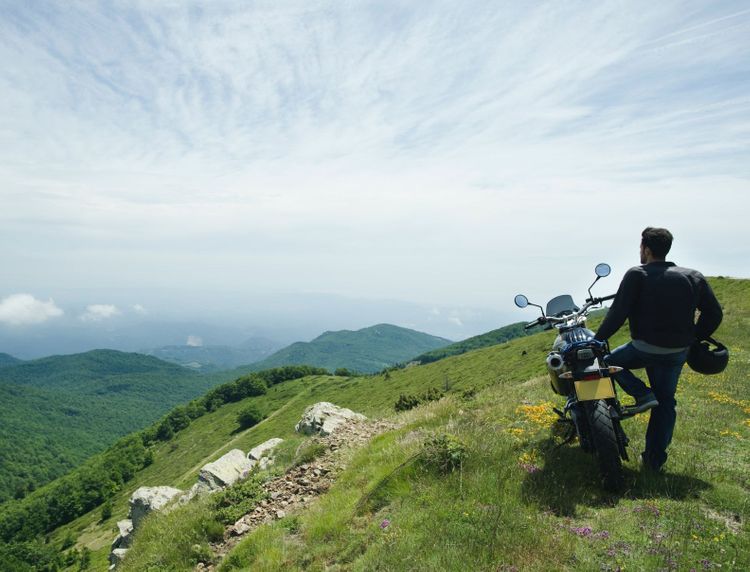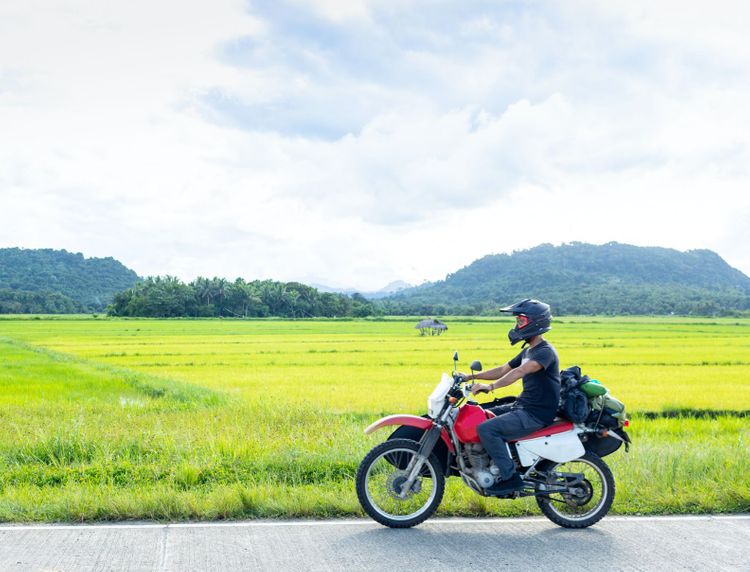Motorcycle Traction Control Systems
You love riding your motorcycle, don't you? You enjoy the thrill of speed, the freedom of movement, and the feeling of being one with your machine. But you also know that riding a motorcycle can be dangerous, especially on unpredictable roads and in challenging weather conditions. You have probably experienced or witnessed some scary situations where your bike lost traction, and you almost lost control. Maybe you even had a crash or a close call because of it.
That is why you need to know about motorcycle traction control systems.
Share this article
List of Content
- What is a Traction Control System in Bikes and How Does It Work?
- Why Do You Need a Traction Control System in a Bike?
- What Types of Motorcycle Traction Control Systems Are There?
- Traction Control Bikes in India
- Conclusion
- FAQS
What is a Traction Control System in Bikes and How Does It Work?
If you are wondering about traction control meaning, then it is a system that monitors the speed and rotation of your bike's front and rear wheels and compares them with the throttle position, the lean angle, and other parameters.
If the system detects that the rear wheel is spinning faster than the front wheel or that the front wheel is lifting off the ground, it means a loss of traction. This can happen when you accelerate too hard, brake too abruptly, or encounter slippery or uneven surfaces.
When the system senses a loss of traction, it intervenes by reducing the engine power, adjusting the fuel injection, or applying the brakes, depending on the type and level of intervention.
The goal is to restore the optimal balance between the front and rear wheels and to prevent the bike from going out of control. The system does this automatically and continuously, without you noticing it, unless you are in a critical situation.
Why Do You Need a Traction Control System in a Bike?
Traction control in a bike can provide you with several benefits, such as:
Preventing drifting
Drifting is when your rear wheel slides sideways, causing your bike to lose its intended direction. This can happen when you corner too fast or encounter gravel, sand, or wet patches on the road. Motorcycle traction control can detect and correct drifting by reducing the engine power or applying the brakes and helping you maintain your line and stability.
Preventing wheelies
Wheelies are when your front wheel lifts off the ground, causing your bike to lose balance and steering. This can happen when you accelerate too hard or hit a bump or a pothole. A motorcycle with traction control helps you keep your front wheel on the ground and your bike under control.
Preventing skidding
Skidding is when your wheels lock up, causing your bike to slide uncontrollably. This can happen when you brake too hard or encounter ice, oil, or water on the road. Motorcycle traction control can prevent skidding by modulating the brake pressure and help you avoid losing grip and crashing.
What Types of Motorcycle Traction Control Systems Are There?
Two significant categories of motorcycle traction control systems are reactive and predictive. They differ in how they detect and respond to a loss of traction.
Reactive traction control systems
These are the most common and basic types of traction control systems. They react to a loss of traction after it has already occurred and try to correct it as quickly as possible.
This traction control system uses sensors to determine the speed and rotation of the wheels and compare them with the throttle position and other parameters. They intervene by reducing the engine power, adjusting the fuel injection, or applying the brakes, depending on the type and level of intervention.
They are usually adjustable, meaning you can choose how much intervention you want or turn them off completely.
Predictive traction control systems
These are the most advanced and sophisticated types of traction control systems. They predict a loss of traction before it happens and try to prevent it from happening at all.
They use sensors to measure not only the speed and rotation of the wheels but also the lean angle, the pitch angle, the acceleration, the deceleration, and other parameters.
This system uses intelligent algorithms and AI to study data and determine the best grip and power for different situations. Based on the situation, they adjust engine power, fuel injection, brakes, and suspension.
Predictive systems are usually adaptive, meaning they can learn from your riding style and preferences and adapt accordingly.
Traction Control Bikes in India
Some of the mid-range and cheapest bikes with traction control in India are:
| Bikes | Price Range (in ₹) | Cubic Capacity | Mileage |
|---|---|---|---|
| Yamaha MT 15 | 1.92 lakhs -1.98 lakhs | 155 cc | 56.87 kmpl |
| Yamaha R15 V4 | 2.08 lakhs -2.25 lakhs | 155 cc | 55.20 kmpl |
| Kawasaki Ninja ZX-10R | 17.86 lakhs -18.39 lakhs | 998 cc | 12 kmpl |
| Suzuki Hayabusa | 18.86 lakhs | 1340 cc | 17 kmpl |
Conclusion
Motorcycle traction control systems are excellent tools to prevent safety issues like drifting, wheelies, and skidding. They improve stability and handling by monitoring wheel speed and intervening with actions like reducing engine power or applying brakes. There are two types: reactive, responding after losing traction, and predictive, aiming to prevent it.
Even though the use of traction control safeguards your ride, you must still consider buying a two-wheeler insurance policy. The insurance for a 2-wheeler protects your bike against the damage caused by theft, riot, natural calamities, or fire. The bike insurance policy also compensates if your vehicle damages the property of a third party.
However, compare two-wheeler insurance from different insurance providers to ensure you get the best.
FAQS
What is traction control in bikes?
Traction control in bikes is a system that prevents wheel spin during acceleration by adjusting engine power.
How does traction control work on a motorcycle?
Traction control on a motorcycle uses sensors to monitor wheel speed. If it detects wheel spin, it adjusts engine power or applies brakes selectively to maintain traction.
Do you really need traction control on a motorcycle?
Yes, traction control on a motorcycle is like having a safety net. It helps prevent skidding by adjusting power, making rides safer, especially for beginners and in tricky conditions.
Share this article
Latest from our blogs

5 Tips To Keep Your Two Wheeler Looking New
Make sure to wash it often. This keeps dirt and other unwant...
Read More
5 things you did not know about two wheeler insurance
In a time of heavy traffic and accidents, two wheeler insura...
Read More
What Does It Take to Be a Good Biker?
You must have wondered what it takes to become a better ride...
Read More